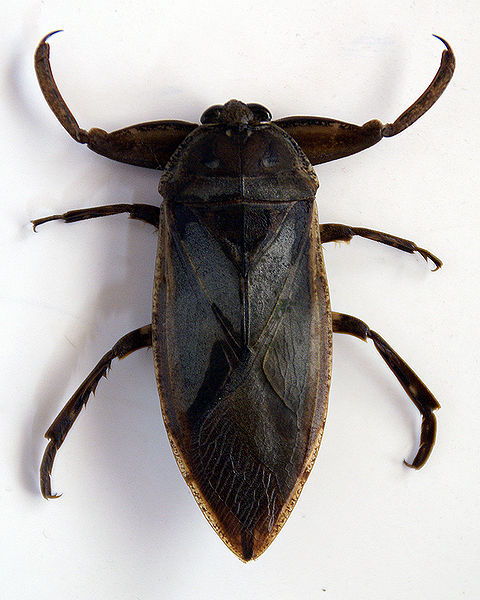Interactions
The giant water bug is known as an ambush predatory insect. They will wait on the bottom of the lakebed or on plants to ambush their prey. The mouth parts of a giant water bug are designed specifically for predation. They have a beak designed for piercing the prey and as mentioned on the nutrition page, injecting an enzyme to liquefy the insides of their prey. Prey for this insect includes other small insects and crustaceans. The Giant water bug has also been able to take down animals much larger than itself such as frogs and water snakes.
To some people the giant water bugs are considered a pest or a nuisance. These bugs are strongly attracted to lights and many of them can be found around one light. On top of this they emit sounds that in mass gatherings can become loud and annoying. Fish hatcheries also consider giant water bugs a potential problem because adult water bugs have been known to feed on some smaller fish. The last way a giant water bug can be considered a pest is for swimmers. They are able to deliver a painful bite to swimmers because of the digestive enzyme they secrete with the bite
.

Although the giant water bug can be considered a nuisance they are also very beneficial as gauges of the environment and ironically as pest control. They are considered to be a valuable and safe way to control the mosquito population. These bugs typically prefer cleaner and clearer water and in this way can be used as a gauge to the water quality.